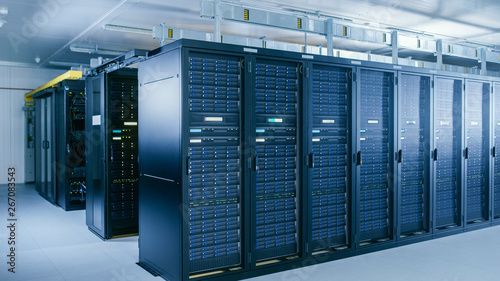As technology evolves, businesses often find themselves needing to retire outdated infrastructure. Whether it's part of a cloud migration, downsizing, or compliance initiative, data center decommissioning services play a crucial role in this transition. Proper decommissioning not only ensures security and compliance but also supports sustainable IT practices. This article will walk you through everything you need to know—from secure data destruction to best practices and service provider options.
Understanding Data Center Decommissioning
Data center decommissioning is the organized process of shutting down and removing data center equipment that is no longer needed. It involves identifying and removing physical and virtual assets, wiping or destroying sensitive data, and responsibly disposing of or recycling IT hardware. Failing to decommission correctly can expose a company to serious risks: data breaches, non-compliance with regulatory standards, and costly fines. An efficient decommissioning strategy ensures sensitive data is handled securely, legal obligations are met, and valuable assets are repurposed or recycled effectively.The Importance of Secure Data Destruction
One of the most critical aspects of decommissioning is secure data destruction. Simply unplugging servers or wiping disks is not enough. Data can still be recovered from improperly handled devices. Secure methods ensure that data is irretrievable and that no digital footprint remains. Common techniques include:- Hard drive shredding: Physically destroys drives into small particles.
- Degaussing: Uses a high-powered magnet to erase data.
- Certified data wiping: Overwrites existing data multiple times using software.
Best Practices for Decommissioning a Data Center
A successful data center shutdown requires strategic planning, clear procedures, and proper execution. Below are the key steps involved in a best-in-class decommissioning process:1. Inventory and Audit
Begin by creating a comprehensive inventory of all IT assets—servers, routers, storage units, cables, software licenses, etc. This audit helps identify equipment for reuse, resale, or destruction.2. Backup and Data Migration
Before anything is decommissioned, ensure all critical data is backed up and migrated to your new environment—be it a cloud platform or a different on-premises system.3. Data Destruction
Employ certified secure data destruction services to ensure complete sanitization of hard drives and other storage media. Maintain chain-of-custody documentation throughout the process.4. Asset Removal and Transportation
Disassemble and remove hardware carefully to avoid damage or data exposure. Qualified vendors can transport assets securely using tamper-proof logistics solutions.5. Environmentally Compliant Disposal
Sustainability is no longer optional. Use data center recycling services that comply with local and international environmental standards (e.g., R2, e-Stewards).6. Documentation and Reporting
Keep a detailed report of every stage, including asset tracking logs, serial numbers, and data destruction certificates. These records prove due diligence and aid in future audits.Data Center Trends in 2025: Unwrapping 7 Predictions for the Future | Reboot Monkey
Top Service Providers in the Decommissioning Space
Working with professional decommissioning providers ensures efficiency, security, and compliance. Below are some industry leaders:- Iron Mountain: Offers full-service data center decommissioning, including on-site shredding, scanning, and asset logistics.
- Guardian Data Destruction: Specializes in both on-site and off-site IT asset disposition, ensuring total compliance.
- Sims Lifecycle Services: A global leader in data center recycling, resale, and certified data destruction.
- ERI: Provides nationwide e-waste recycling and certified hard drive shredding.
- CompuCycle: Offers secure decommissioning, asset tracking, and sustainability-focused disposal services.
Sustainable IT Asset Disposition (ITAD)
Sustainability has become an integral part of IT operations. Modern data center decommissioning services prioritize environmentally responsible practices. This includes:- Recycling electronic waste rather than sending it to landfills.
- Refurbishing and reselling usable hardware.
- Ensuring toxic components are safely handled according to EPA guidelines.

